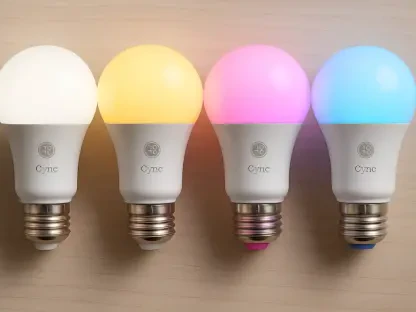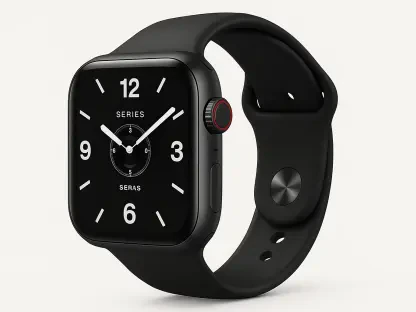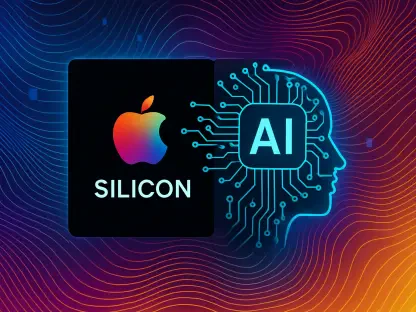The tech market is witnessing a surge in AI gadgets that go beyond the conventional smartphones and laptops. These innovative devices are integrating generative artificial intelligence (Gen AI) into everyday items, showcasing both the potential and current limitations of AI in consumer technology. This article explores five groundbreaking AI gadgets that are reshaping the tech landscape.
Ray-Ban Meta Glasses
Fashion Meets Functionality
Meta’s Ray-Ban glasses illustrate how AI can merge seamlessly into a familiar and fashionable form factor, unlike bulky AR glasses. These glasses maintain the classic Ray-Ban design, making them more accessible and appealing to mainstream consumers. The AI functionality is subtly integrated, allowing users to take photos, listen to music, and interact with the Meta AI digital assistant to get information on objects within their view. This integration of generative AI into a stylish, everyday form factor shows a unique approach to making AI more consumer-friendly and unobtrusive.
The glasses’ ability to deliver such functionalities without sacrificing the iconic Ray-Ban aesthetic sets them apart from other attempts at AR or AI glasses. They avoid the pitfalls of becoming cumbersome or overly technical, thus opening up a broader market segment that may have previously been hesitant to adopt tech-forward eyewear. Despite not offering augmented reality experiences, the on-the-go AI assistance provided by these glasses highlights a new direction in wearable technology that prioritizes ease of use and seamless integration into daily life.
Market Success and Continuous Improvement
Despite not being designed for augmented reality experiences, the Ray-Ban Meta glasses have surpassed sales of traditional Ray-Bans in regions like Europe, the Middle East, and Africa. Their market success is significant, demonstrating a high consumer interest in AI-enhanced wearables that do not drastically deviate from conventional aesthetics. Meta’s commitment to continual improvement of these glasses through software updates underscores their success as complementary devices to smartphones, not just as standalone gadgets.
The regular updates ensure that these glasses remain relevant and functional, addressing any initial limitations and expanding their capabilities over time. By focusing on incremental enhancements and listening to consumer feedback, Meta can continually refine the user experience. This approach aligns with broader trends in the tech industry, where the lifecycle of a product is extended through software improvements, rather than relying solely on hardware upgrades.
Rabbit R1
Unique Functionalities
The Rabbit R1, an AI gadget that made waves at the CES tech show, offers unique functionalities through its AI-powered computer vision. The vibrant orange R1 features a camera and dual mics capable of recording audio, setting timers, providing search results, making voice recordings, and streaming music. These features distinguish it from smartphones by focusing on specific use cases where the AI can deliver a more tailored experience.
Initially, the Rabbit R1 faced some skepticism for targeting tasks already well-managed by smartphones. However, its unique positioning reveals a potential for more specialized, task-focused devices that leverage AI to offer a faster, more intuitive user experience. The R1’s bright color and friendly design also make it an approachable device, potentially appealing to a demographic interested in tech but perhaps uninterested in the complexity of smartphones.
Challenges and Improvements
Early reception indicated that the Rabbit R1 faced challenges, particularly in performing tasks that smartphones already handle effectively. Users noted that its AI functionalities sometimes fell short in comparison to the versatility of smartphones. Despite this, ongoing improvements and enhancements have bolstered its performance, showcasing the potential of AI-specific devices. These enhancements have included better camera functionality, improved audio recognition, and more robust search capabilities.
The journey of the Rabbit R1 represents a broader lesson in the tech industry: the need for iterative improvement and consumer feedback integration. While initial models may face critiques, the reception itself provides valuable insights into how the device can be optimized. As these AI gadgets evolve, their unique capabilities can eventually carve out niches where they excel beyond the competition of traditional smartphones. The R1’s development and market adaptation reflect the dynamic nature of AI integration in consumer tech.
Bee AI Wristband
Generative AI in Wearables
Bee, a new AI wristband, represents another innovative foray into the AI gadget market. Unlike traditional wearables, Bee leverages generative AI to enhance its utility. Connected to users’ smartphones, this AI wristband uses dual mics to listen and analyze voice memos and conversations, generating summaries and to-do lists. Its unique functionalities make it a standout among AI gadgets, focusing on productivity and personal organization.
The wristband’s ability to convert voice interactions into actionable insights represents a quantum leap in wearable tech functionality. It transforms the way users interact with their digital lives, automating mundane tasks and providing on-the-go AI assistance. This generative AI element underscores the potential for wearables to become indispensable tools for daily management, beyond just fitness or alerts. The Bee wristband’s user-friendly interface and AI capabilities demonstrate how wearables are transcending their traditional roles.
Multilingual Support and Integration
Bee supports 40 languages and integrates with healthcare tools and Google and Gmail accounts, providing personalized summaries and action items. Retailing at $50 with an optional $15 subscription for additional capabilities, Bee stands out for its targeted AI functionalities in a wearable format. This multilingual support makes the Bee wristband accessible to a global audience, adding to its appeal for international markets.
The integration with healthcare tools further broadens its use cases, making it useful not just for personal productivity but also for health and wellness management. By tapping into these diverse functionalities, the Bee wristband positions itself as a versatile tool that can adapt to a range of user needs. Its affordability, coupled with the optional subscription for enhanced features, ensures that it can reach a wider audience without compromising on innovation.
Google Pixel Buds Pro 2
Advanced AI Integration
Google Pixel Buds Pro 2 showcase AI integration in wireless earbuds. While previous generations already featured Google Assistant, the Pixel Buds Pro 2 advance this with Google’s Gemini AI. This facilitates a more conversational and interactive experience, allowing users to activate the assistant with the “Hey Google!” command and access the Gemini Live AI feature. These earbuds aim to provide an immersive user experience, moving beyond simple voice commands to more complex interactions.
The integration of Gemini AI represents a significant step forward, leveraging Google’s advanced AI capabilities to enhance user interactions. This technology enables the earbuds to understand context better and provide more accurate and helpful responses. The conversational nature of Gemini AI also makes it easier for users to engage with their devices in a natural, intuitive manner. These advancements highlight Google’s commitment to embedding generative AI deeply into its products and expanding its functionalities.
Expanding Use Cases
Although these AI functionalities can be inconsistent, they illustrate Google’s commitment to embedding generative AI deeply into its products. The Pixel Buds Pro 2 expand the use case for AI in earbuds beyond the capabilities of smartphones, offering a more immersive and interactive user experience. By integrating AI, these earbuds can perform more complex tasks, like real-time language translation and personalized audio adjustments.
The Pixel Buds Pro 2’s ability to adapt audio settings based on environmental noise and user preferences showcases the potential for AI to enhance everyday experiences. These use cases demonstrate the evolving role of AI in consumer tech, where earbuds are no longer just about sound but become interactive, smart devices. The inconsistency in some AI features is a reminder of the growing pains associated with new technology, but also an indicator of rapid advancements and improvements on the horizon.
Kindle Scribe (2024)
AI-Powered E-Reader
The Kindle Scribe (2024) from Amazon brings AI to the e-reader market. Launched as Amazon’s first e-reader with pen support, the new generation of Scribe elevates the handwriting experience with AI-powered features. The “Refined Writing” feature converts handwritten notes into more legible text, while “Summarize” distills key points from writing into a one-page summary. By combining e-ink technology with generative AI, the Kindle Scribe aims to revolutionize the way users interact with digital text.
This integration of AI offers significant benefits for users who take extensive notes or need to organize information efficiently. The AI-powered handwriting recognition ensures that notes are easily readable and searchable, enhancing the overall utility of the e-reader. Furthermore, the summarization feature allows users to quickly review key points, making it a valuable tool for students, professionals, and avid readers alike. The Kindle Scribe’s focus on productivity and ease of use illustrates the potential of AI to transform traditional devices.
Evolving User Experience
The tech market is experiencing a significant surge in AI gadgets that extend far beyond the realm of conventional smartphones and laptops. These cutting-edge devices are incorporating generative artificial intelligence (Gen AI) into everyday products, revealing both the immense potential and current limitations of AI in the consumer tech industry. This coming era of innovation signifies how Gen AI is transforming even the most ordinary items, creating new opportunities for enhanced user experiences. The integration of AI into these devices is not without its challenges, but the advancements being made are undeniably impressive. In this article, we will delve into five groundbreaking AI gadgets that are currently reshaping the technological landscape, offering a glimpse into the future of consumer electronics. The use of Gen AI in these products exemplifies how artificial intelligence continues to evolve and shape the tools we use in our daily lives. These five devices highlight the ongoing trends and possibilities in AI integration, reflecting a new wave of technological progress.









